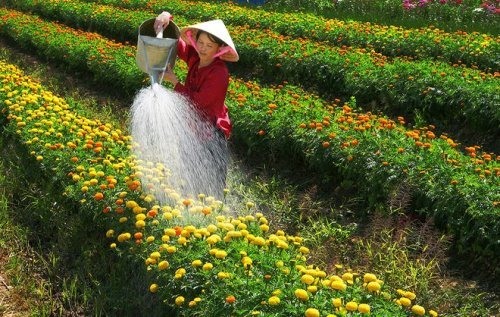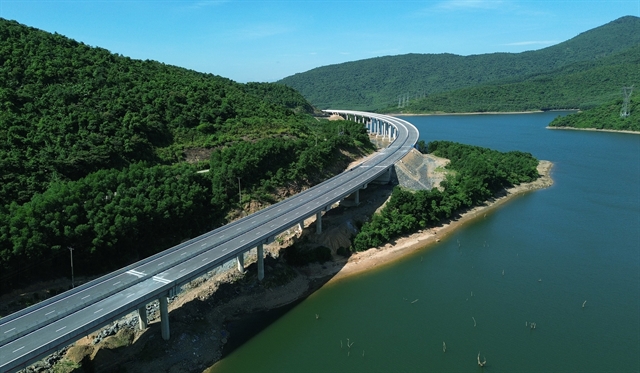 A Twist in the Tale
A Twist in the Tale

Đồng Tháp is proud of its flowers.
The southern province believes it is second to none in the country when it comes to the sheer variety and number of blooms that bloom on its soil. Yes, that includes the more famous City of Flowers.
" />
Đồng Tháp is proud of its flowers.
The southern province believes it is second to none in the country when it comes to the sheer variety and number of blooms that bloom on its soil. Yes, that includes the more famous City of Flowers.
 |
| A farmer waters flower farm in Dong Thap Province. — Photo tinmientay.net |
Đồng Tháp is proud of its flowers.
The southern province believes it is second to none in the country when it comes to the sheer variety and number of blooms that bloom on its soil. Yes, that includes the more famous City of Flowers.
What’s more, the province was determined to prove its standing with a stupendous display that would ensure thereafter that the very mention of flowers would trigger, via word association, the name of the province.
So it happened that a Tourism Week (January 7-14) organised in the province’s Sa Đéc Park presented a waterfall of flowers as the event’s centerpiece.
With colourful flowers – roses, roses, daisies, periwinkle and what not – cascading from a height of 12m, it was an arresting sight, drawing visitors in the thousands to take, what else, selfies of themselves bathing in the floral flow.
It is reported that up to a half of billion đồng was spent on the waterfall and organisers were expecting to soak in the applause that followed. Instead, they were drenched in derision, as people mocked the flowing lines of plastic flowers that were interspersed with the fresh ones.
The province has got its wish though. It is famous for artificial flowers now. Naturally.
Chopping boards fail to make the cut
A resident of the northern mountainous province of Hà Giang was returning home from the local market in Mèo Vạc District when he was caught by forest rangers.
What had he bought that was illegal? Rhino horns? Tiger claws? Eelephant tusks? Wildlife meat?
None of the above.
He had bought two chopping boards. But, said the forest rangers, these were made of the nghiến (Burretiodendron hsienmu) wood, which is on the list of woods that cannot be transported or traded.
This is impressive, that the rangers were able to spot illegal chopping boards. Such investigative prowess at the micro-level surely means the rangers are on top of the problem at the macro-level.
We wish.
Dozens of hectares of “special-use” forests in the province have been destroyed for years with no sign of stopping. Given that the forest rangers haven’t come up with very persuasive arguments for this consistent failure to stop poachers and illegal loggers, can the chopping boards be seen as a turning point? Have they stopped missing the wood for the trees?
We wish. — VNS




